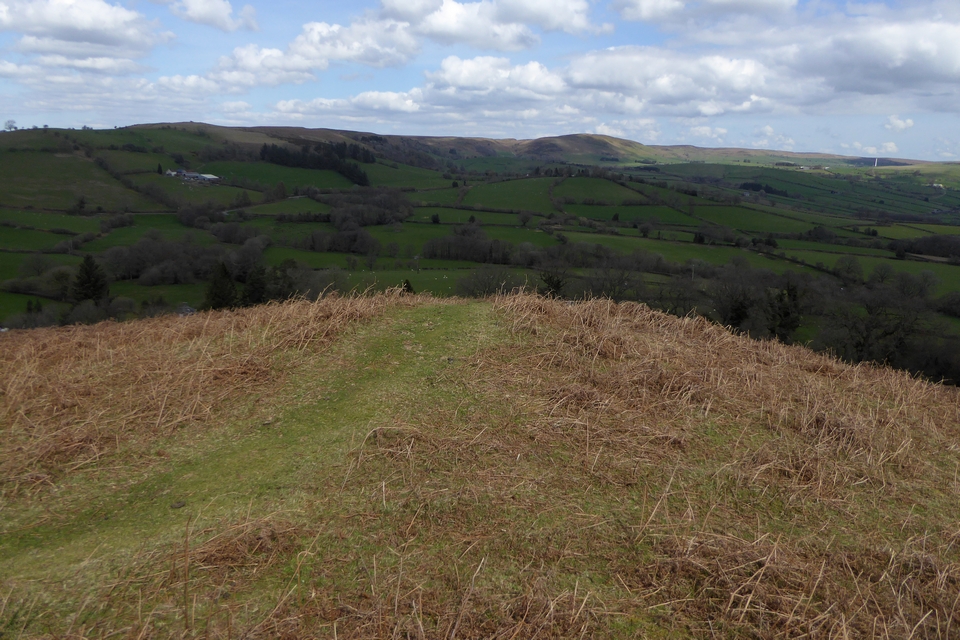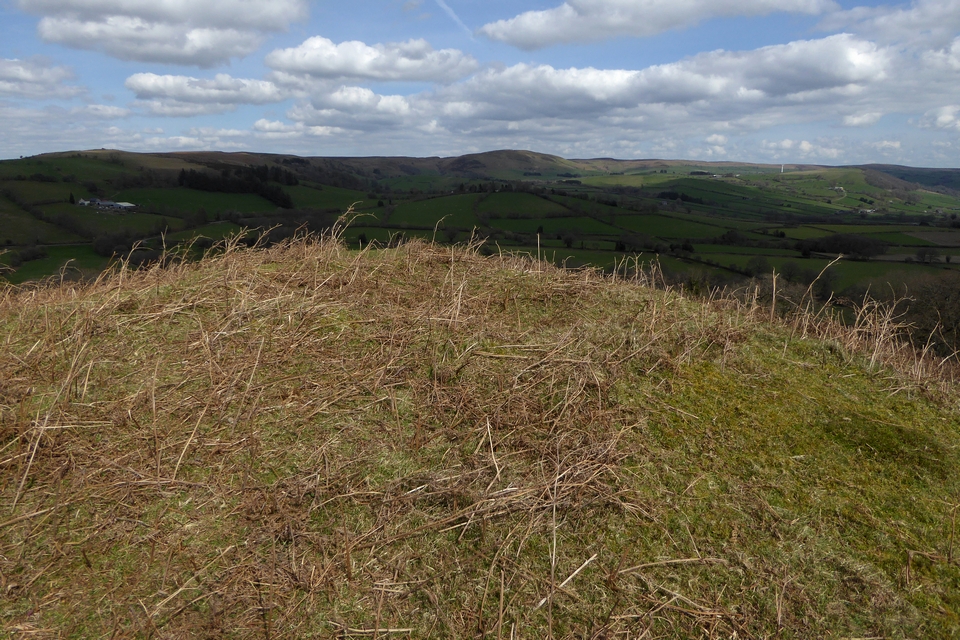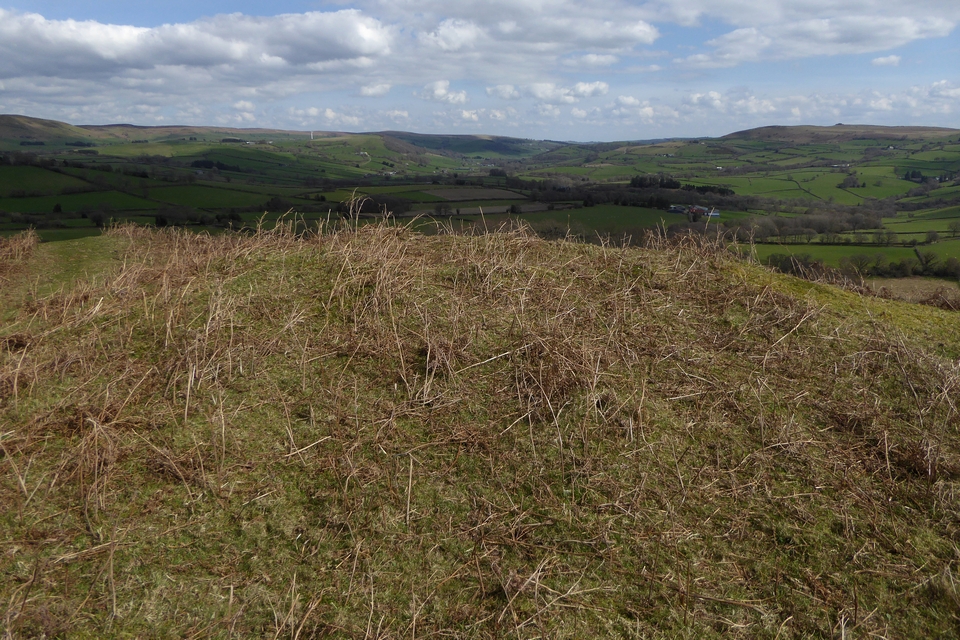
Very small stone in the northern arc in the foreground.

Very small stone in the northern arc in the foreground.

Looking south to the great escarpment of Bannau Brycheiniog/Fforest Fawr/Y Mynydd Ddu. The upright in the foreground has been shattered down to ground level, presumably by millenia of frost and water.

The best-preserved upright in the circle, looking southeast towards the Black Mountains.

General view northeast across the circle. The distant mountains in the centre are Radnor Forest, there’s a ton of remote archaeology on the hills in between.

The peculiar slab-in-bank arrangement to the west of the circle, noted by previous visitors. I came across this on my way to the circle from the summit of the hill.


The slab set on edge to the south. Banc y Celyn stone circle is on the hill beyond.



Looking south-ish across the cairn. Pen y Fan on the skyline, right of centre.

Twyn y Garth is the prominent hill in the centre of the image. Seen across the Gwy/Wye from Twmpath to the west.

Towards the northwestern escarpment of the Black Mountains.

Looking towards the two round barrows at the northeastern tip of the summit ridge.

With Banc y Celyn on the skyline across the river.



Looking west across the Gwy. The gun is a German howitzer from World War I, placed on the hill as a war memorial.

The point where the eastern annex joins the main fort’s rampart.

The eastern rampart of the main fort, looking towards The Begwns.


Looking towards The Begwns, Hay Bluff/Pen y Beacon and Twmpa.

The dished top of the southern barrow.

The southern barrow from the northern one. The Black Mountains and Mynydd Troed over on the left skyline, with Pen y Fan and Corn Du over on the right.


Looking north towards Llandeilo Hill.

The southern barrow, looking northeast towards distant Llanbedr Hill, with the Begwns over on the right.

The northern barrow on the left, the southern on the right. Looking northeast.


There’s a fist-size chunk missing on the back of the stone, whether from erosion or some man-made reason I don’t know.

Looking southeast; Black Mountains on the left skyline, Mynydd Troed the prominent outlying hill centre skyline.

Looking east towards Afon Gwy/River Wye, out of sight at the end of the field.

This is a great stone; how much is underground to support this much of a lean?


A good place to appreciate sedimentary rocks; western tip of the fort promontory.

Looking across the Hafren towards North Devon from the fort interior.

The inner rampart on the east side of the fort.

The inside of the outer rampart on the east side of the fort, from the inner ditch. Impressive earthworks!

The muddy Wales Coast Path crossing the outer rampart on the east of the fort.

Looking along the coast towards the fort (left of centre, with St Donat’s Point beyond) from Stout Point to the east.

Steps crossing the outer western rampart near the coastal watch house.

The inner western rampart. The ruins of the Summerhouse which give the site its name can just be seen on the right.

The western ramparts boast some superb hart’s tongue ferns.

Steps built into the inner western ramparts where the Wales Coast Path crosses the site.

The view across the Hafren from the fort, looking towards Somerset. It’s unclear whether the fort would have extended much further outwards from here but the cliffs are crumbling and eroded.

The western ramparts, still accessible but very overgrown.

Looking east along the northern ramparts, now regrettably fenced off by the new owners.

The new owners aren’t keen on visitors.

The northwestern panorama of the Black Mountains from Pen-rhiw-wen (this is taken from just outside the fort to avoid the trees).

